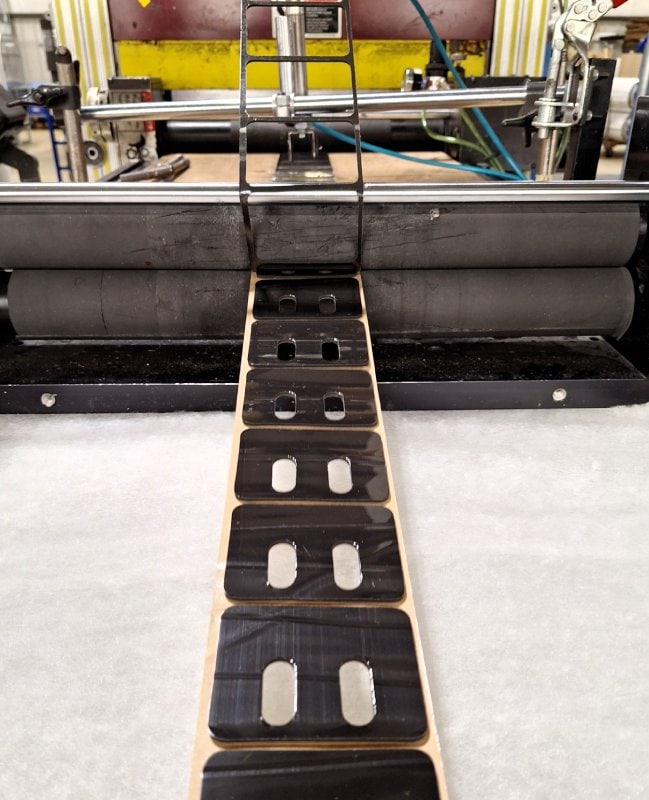CGR Products utilizes a variety of die cutting methods to produce a product that is precisely the shape and dimensions that are required. Our state-of-the-art methods can be used to cut almost any design out of soft, flexible non-metallic materials, as well as some harder and more rigid substrates. These methods can also be used to cut adhesive material and products for a wide selection of applications across industries.
The various die cutting methods that CGR Products currently offers include:
Rotary die cutting and flatbed die cutting are ideal for producing kiss cut parts. Rotary die cutting is a very fast, cost-effective method of producing high volume orders.
CGR’s flatbed die cutting allows for easy hole and web removal. Both of these methods are quite precise and are optimal for producing parts with very tight tolerances. Learn More >
Visit our custom cutting page learn the difference between rotary and flatbed die cutting >
Kiss cutting involves cutting a material without penetrating the material’s backing liner.
This method is great for producing sheets of parts that can then be removed by the user one at a time as desired — a roll of stamps where each can be removed individually is one such example. CGR Products is able to kiss cut your materials with exactly this precision.
Knife cutting is one of the fastest ways to produce a part and can produce a smooth, clean edge on manufactured parts. Our knife cutting machine cuts paper, fiber, rubber and foam gaskets with a serrated blade and is extremely accurate.
The knife machine is ideal for running prototype parts and offers optimum material yield to keep costs down.
Slitting and splitting are shearing operations used to cut large rolls or sheets into narrower or thinner rolls or sheets.
CGR Products slits a variety of materials utilizing the technology of displacement slitting (more commonly known as baloney slitting), a process whereby rolled materials are automatically slit without unwinding/rewinding. CGR splits/skives materials utilizing a Fecken-Kirfel Loop Skiver.
Waterjet cutting involves using a thin jet of high-pressure water to precision cut soft materials into the desired shape. Waterjet cutting can be used to produce a part with extremely tight tolerances, thanks to its accuracy and precision of the cut. It is also very effective at producing parts with very clean and smooth edges.
Our waterjets can cut material up to 9” thick without the cupping effect that often accompanies cutting with a steel rule die. A waterjet is great for running prototype parts and usually offers a better material yield than other cutting equipment.




